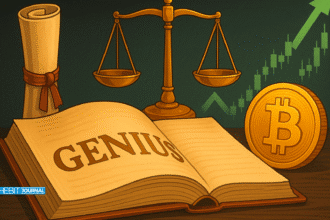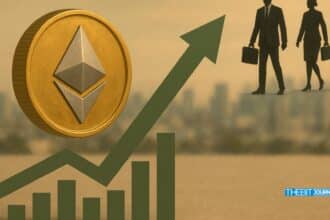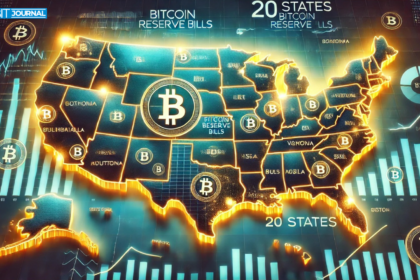The rising US-China trade conflict makes investors worldwide expect rough trading conditions will appear this week. The U.S. President Donald Trump imposes heavy tariffs as part of his strategy against China that leads markets to prepare for a new economic conflict between these rivals.
The President confirmed his trade talks with China during his Oval Office speech last week. He said, Yeah, we’re talking to China. I would say they have reached out a number of times. He indicated that behind-the-scenes talks occur between him and the Chinese president even though he did not directly mention President Xi Jinping.
Trump’s Tariff Strategy Faces Mixed Market Reactions

Financial markets have experienced significant instability. During the last five trading days, US indices presented separate performance numbers. The Nasdaq Composite decreased 0.44% as the S&P 500 returned a modest gain of 0.52%. Market data showed the Dow Jones losing 0.89% with the Russell 2000 index rising 2.9%.
The crypto market showed extreme price fluctuations once more. During the Sunday evening market actions, Bitcoin (BTC) experienced steady growth, which resulted in breaking past $87,000 to achieve $87,236 at the end of the trading day. Leading altcoins, including Ethereum, Cardano, and Ripple’s XRP, showed falling prices last week because digital assets now vary widely in their market behavior.
Trump Frames Tariffs as Economic and Political Strategy
During last week investors transferred their money into gold as the traditional safe haven because geopolitical uncertainty tested financial systems around the world.
The former President of the United States defended his trade policy on Truth Social by saying experts lack business knowledge and political sense. He presented tariffs as both an economic power method and a basic viewpoint about America’s market system. In his statement, he emphasized that control over resources gives people ultimate decision-making authority.

Market Sentiment Weakens as Tariff Fears Deepen

Most professional economists and business executives continue to oppose these policies. Tariffs cause higher costs for basic items resulting in supply chain disruptions and forcing Americans and producers to pay more. People worry that these trade tactics will reduce job opportunities and weaken wages that push household income lower this slows the national economy.
People buying and selling assets remain worried right now. Derivative trades linked to major US stock market indices declined by about 0.5% ahead of regular market hours on Sunday evening.

Financial experts see the mixed results in both financial markets as proof investors need to know what President Trump will do next. Despite not being completely trusted, investors show interest in Bitcoin during economic challenges because they look for alternative protection against central bank policies and government interventions.
Conclusion
The world markets face another tough week because investors remain focused on when Trump will raise tariffs. The volatility in financial markets remains strong because investors see falling equity future prices as bitcoin gains more interest. The marketplace quickly reacts to talks with China without any clear path to determine if the situation will improve or intensify.
Follow us on Twitter and LinkedIn, and join our Telegram channel to be instantly informed about breaking news!
FAQs
Q1: Why are markets volatile now?
Trump’s tariffs on China are fueling uncertainty.
Q2: How did U.S. stocks perform last week?
Mixed results: S&P up, Dow and Nasdaq down.
Q3: What happened to crypto prices?
Bitcoin rose; ETH, ADA, and XRP dropped.
Q4: Why is gold rising?
Investors turned to gold as a safe haven.
Glossary Of Key Terms
Tariffs
Taxes on imported goods to protect local industries.
Equities
Stocks represent ownership in a company.
S&P 500
Index of 500 large U.S. companies.
Dow Jones
Index of 30 major U.S. companies.
Nasdaq Composite
Index of over 3,000 U.S. tech-focused stocks.
Russell 2000
Index of 2,000 small U.S. companies.
Trade War
Economic conflict over tariffs and trade barriers.





























